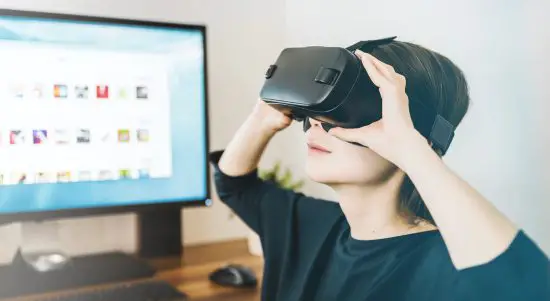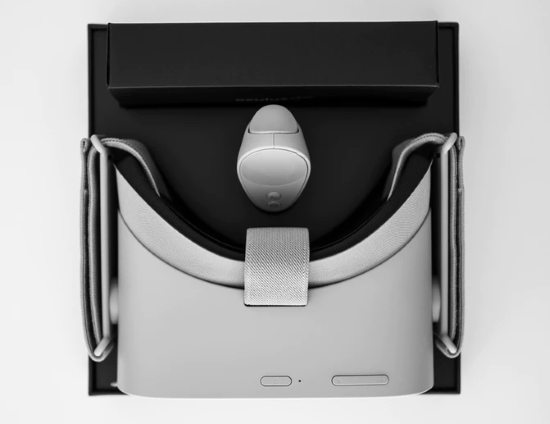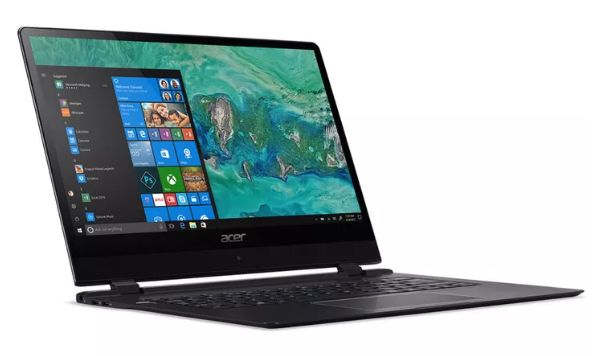Mobile VR headsets helped billions of people test Virtual Reality, but as of the recent past, they are all but legitimately a device of the history. Oculus CTO John Carmack presented an acclamation a few months back. It was the phone-powered Gear VR smartphone headset. He claims that the headset’s times were numbered. And Google just exposed that it is stopping the Google VR services like Daydream View smartphone headset, furthermore to ignoring Daydream support from the new Pixel 4 smartphone. The application will continue to work on older phones. However, Google has currently relinquished on a platform it formerly described as a vital part of Android.
Daydream was published in 2016, ensuing on Google’s mobile-powered Cardboard headset. At that time, Google projected to have a large number of users on Daydream-compatible smartphones in several years. According to a spokesman, in 2019 not a sole current-generation smartphone supports it. There just has not been the wide developer or consumer implementation we had expected, and we have observed declining usage with the time of the Daydream View headset.
You may also like:
- How to Check If your Phone is VR Enabled
- Top 10 Samsung Gear VR Games for You to Play
- Free VR App for Android to Experience Sea World in Virtual Reality
Why Phone-Based VR Failed?
The reasons are expected. Cardboard had made VR reachable. But it was a very low-priced, disposable product just for relishing for a short period of time. Creating the hop to user headset is hard. A spokesperson says that we have seen lots of potential in mobile VR, being capable to use the device you lug with wherever you go. But with the passage of time, we observed certain clear limitations making phone VR from being a worthwhile long-term solution.

Google says that people did not like to lose access to their smartphones meanwhile Daydream effectually required launching into a separate application ecosystem. That was not a single problem with mobile-based Virtual Reality. Carmack exposed that 3D applications flush out the battery, and above all the Gear VR was frustrating to set up. Carmack says that he considered the major concern was only the friction of getting into it.
Theoretically, the Gear VR was enormously widespread by headset criteria. Samsung dispatched as a minimum of 5 million components of the Oculus-powered device in its initial year of sales, although high-end headsets like the Oculus Rift ended in the thousands. However, Carmack said it could not hold consumers for the reason that if you need to pop out your mobile from your mobile case and berth it in a headset. Samsung has not legitimately stopped the Gear VR. But the headset apparently isn’t available in Samsung’s store or from online vendors like Best Buy and Amazon.

What is Daydream?
Daydream was considerably less fussy as compared to Gear VR, but it is having another major problem: phone manufacturers didn’t support it. Google, in the beginning, announced some partners, including LG, Samsung, and HTC. Many of them added Daydream support; however numerous smartphone displays didn’t fulfill Daydream’s criteria.
Mobile-based Virtual Reality also could not provide similar strong physical experiences like the HTC Vive, PlayStation VR or Oculus Rift. As the manufacturer began learning what actually worked in Virtual Reality, the gap gradually became noticeable. Smartphone headsets were excellent for playing VR videos, however, Virtual Reality videos were difficult to monetize and create, and cinematic VR firms gradually converted their emphasis to augmented reality. Google developed numerous well-known Virtual Reality applications, however many of them required high-end headsets.
In the meantime, self-contained headsets became inexpensive and classier. Oculus occupied the Gear VR’s space with the Oculus Go smartphone headset, and it is currently pushing customers to the Oculus Quest, which is more costly but also more proficient headset. When you can buy standalone Oculus Go for $200 or even the Quest for $400, a $100 plastic case doesn’t appear like a worthy deal.

Google has not actually tried to hook the surge of separate Virtual Reality. It is connected initially with Lenovo and HTC, but HTC backed and Lenovo’s Mirage Solo was efficiently an improvement kit.
If Google returns to standalone VR headsets (or headsets wirelessly connected to smartphones and if upcoming technology allows this) still appears to be the strongest bet.
Simple smartphone headsets are factually only a box with lenses, and basic VR applications are not difficult to make. Therefore mobile Virtual Reality possibly won’t vanish completely.
10 Best VR Headsets of 2020:
- Oculus Rift S PC-Powered VR Gaming Headset
- HTC Vive Virtual Reality System
- Oculus Go Standalone Virtual Reality Headset
- PlayStation VR Headset
- Acer Windows Mixed Reality Headset
- Samsung Gear VR w/Controller (2017)
- WapSter Virtual Reality Headset Glasses
- MERGE VR Headset – Augmented Reality and Virtual Reality Headset
- VeeR Falcon VR Headset with Controller
- BNEXT VR Headset for iPhone & Android Phone


